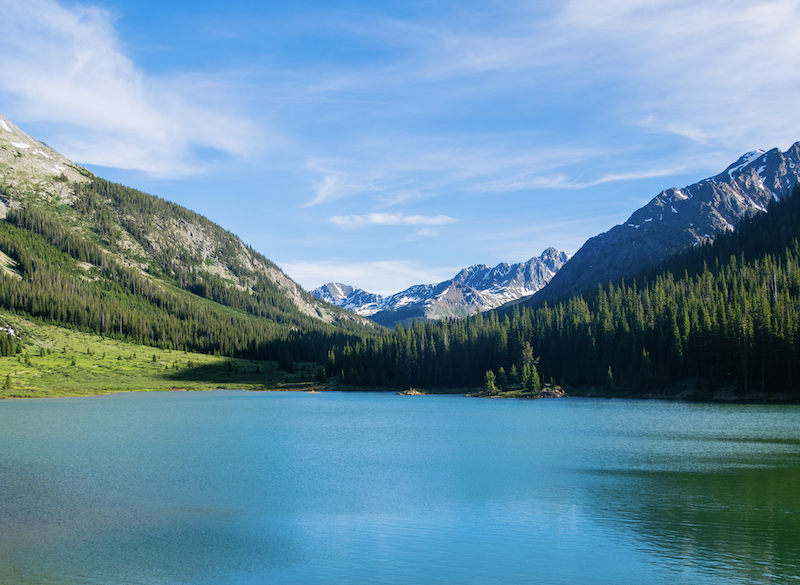Colorado seasons are known for its distinct character and great outdoor opportunities from camping and hiking in summer to leaf peeping and taking scenic drives in the fall to snowboarding and skiing in winter and enjoying hikes at lower altitudes in spring before the snow melts away.
Colorado is a Mecca for outdoor adventures and every season has something unique to offer. As someone who has spent months in the state, I can tell you that no season is boring in Colorado! If you like adventures and spending time outside, you will find plenty of opportunities to enjoy fun activities in Colorado.
Let’s take a look at what each of Colorado seasons, and what you can expect in terms of temperatures and activities.
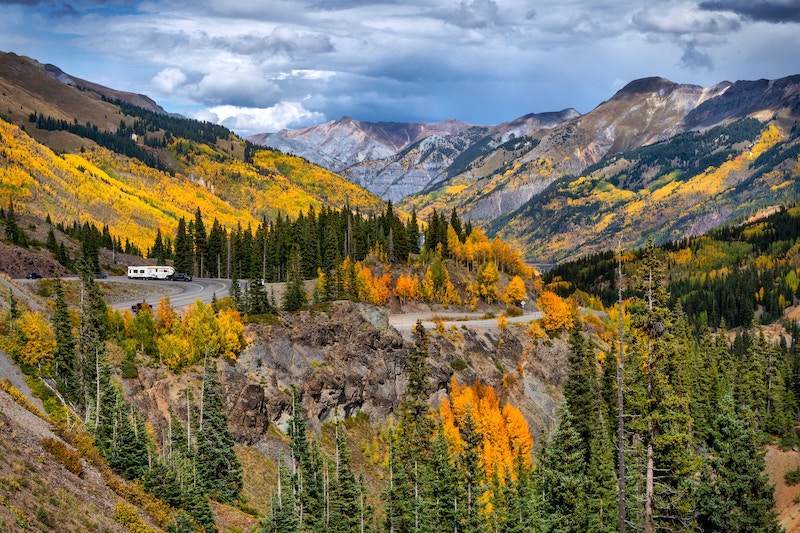
COLORADO SEASONS
Colorado experiences distinct seasons throughout the year. Here is a general overview of the seasons in Colorado:
Spring in Colorado (March to May)
Spring in Colorado can be unpredictable, with fluctuating temperatures and occasional snowstorms. Although March in Colorado still sees plenty of chilly and snowy days, the weather starts to change about mid-April, when the snow at lower altitudes melts away, and temperatures become more mild.
April is the shoulder season in Colorado that’s perfect for visiting on a budget. If you want to save on accommodations and see some of the most beautiful places in Colorado without paying the high-season rates, April is the best time.
Mid-to-late spring is a perfect time to explore Colorado’s Front Range where lower elevation makes it possible to hike and enjoy other fun activities. You can explore hikes around Denver, Colorado Springs, and Boulder.
Summer (June to August)
Colorado’s summers are warm and generally dry, with average temperatures ranging from the 70s to 90s Fahrenheit (20s to 30s Celsius). It’s the most popular time for outdoor adventures like hiking, camping, and swimming in Colorado lakes.
The higher elevation areas offer relief from the summer heat, but it’s not uncommon for snow to linger until late June in those places. If you want to go for a hike in the alpine environment, always download an offline map or bring a paper map with you. Some of the most spectacular places to visit in Colorado in summer are Aspen, Telluride, Crested Butte, and Steamboat Springs.
Fall (September to November)
Fall in Colorado is known for its stunning foliage as the aspen trees turn gold across many parts of the state. The temperatures start to cool down, and you may experience occasional snow at higher elevations toward the end of the season. Fall is a popular time for hiking, scenic drives, and wildlife watching in many parts of Colorado.
If you want to see fall colors in Colorado, plan your trip for mid-to-late September when Aspen trees show off their spectacular foliage.
Winter (December to February)
Colorado winters are known for their abundant snowfall, and the state is a haven for winter sports enthusiasts. Skiing, snowboarding, snowshoeing, and ice climbing are popular activities during this season.
The weather can vary significantly depending on the elevation, with colder temperatures in the mountainous regions. For example, if you travel from Denver to Breckenridge or Aspen in winter, you will notice a drastic temperature change.
Colorado’s weather can be unpredictable, and temperature fluctuations are not uncommon throughout the year.
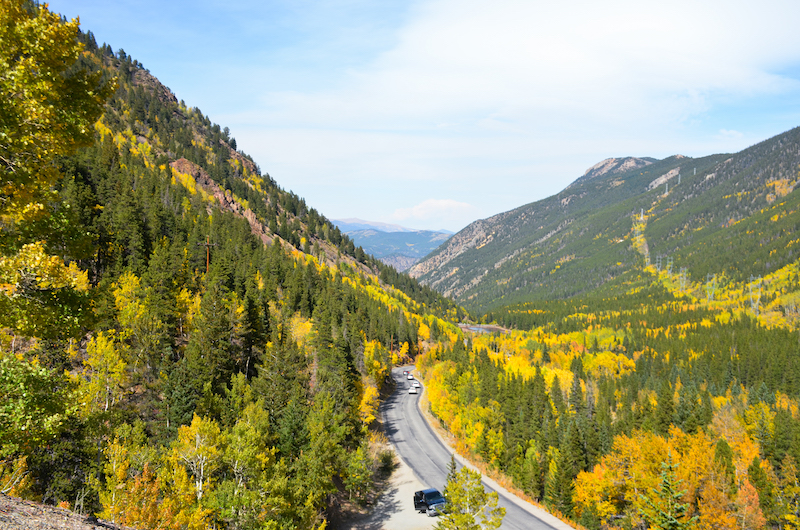
Are there 4 seasons in Colorado?
Yes, Colorado has four distinct seasons: spring, summer, fall, and winter. The duration and weather of each season vary depending on the specific location. In the Rocky Mountains, for example, the winters are longer and colder, while the summers are shorter and cooler.
Grand Junction, the largest city on the Western Slope, has a dry arid climate throughout the year thanks to its location in the high-altitude desert.
Overall, Colorado’s diverse geography and elevation differences contribute to variations in climate and weather patterns across the state.
What month does it get cold in Colorado?
In Colorado, the onset of colder temperatures varies depending on the region and elevation. Generally, the colder months in Colorado span from late October or November through February or March. Higher elevations and mountainous areas may experience cold temperatures and the first snowfall as early as September.
What month is best for Colorado?
The best month to visit Colorado depends on your personal preferences and the activities you’re interested in. While winter in Colorado offers top-notch conditions for winter sports, summer is the best time to see alpine wildflowers, hike scenic trails, and camp. Fall and spring are shoulder seasons in Colorado that are perfect if you want to avoid crowds and save on accommodations.
What’s Colorado’s weather like year-round?
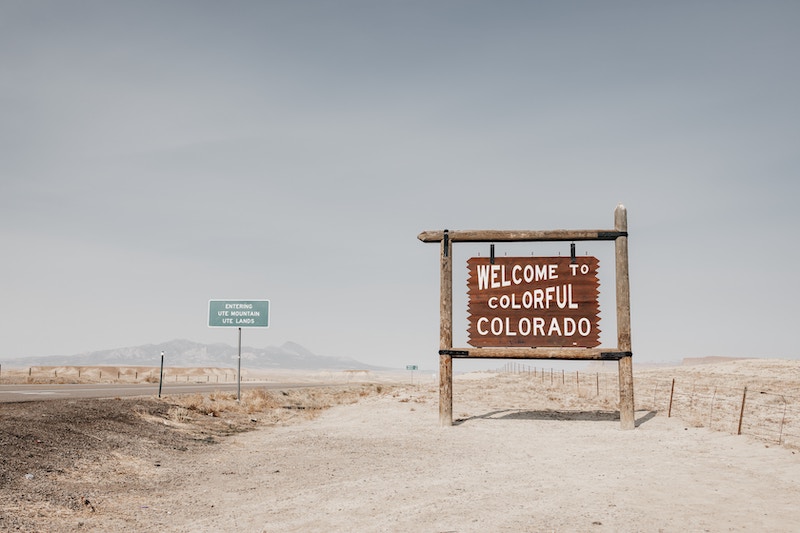
Summer (June to August)
Summer is the peak tourist season in Colorado. The weather is generally warm and sunny, especially in the mountains. While June can have some surprise weather like rain and even hail, July and August offer the best weather that’s perfect for outdoor activities like hiking, camping, mountain biking, fishing, and exploring national parks.
Fall (September to October)
Fall in Colorado brings beautiful autumn foliage as the leaves change colors. The weather is usually mild and dry, and it’s a great time for hiking, wildlife viewing, and enjoying scenic drives like Peak to Peak Byway, Guanella Pass, and Million Dollar Highway. Mid-to-late September is the best time for leaf-peeping in Colorado, although you can find some golden aspens at high elevations earlier into the month.
Winter (December to February)
If you enjoy winter sports like skiing, snowboarding, or snowshoeing, then visiting Colorado during the winter months is a must! The ski resorts in places like Keystone, Aspen, Vail, and Winter Park are bustling with activity, and you can experience the state’s famous powder snow. However, be prepared for colder temperatures and potential snowstorms, which could affect your travel plans.
Spring (March to May)
Springtime in Colorado is a shoulder season. March and April can still bring snow in some areas, especially at higher elevations. But as the season progresses, temperatures gradually rise, and trees begin to turn green. It’s a great time for lower-elevation hiking, visiting some of the best hot springs in Colorado, or exploring front-range cities like Denver and Colorado Springs.
It’s important to note that Colorado’s weather can be unpredictable, and temperature fluctuations can occur throughout the year. It’s always a good idea to check the local forecast before visiting and pack accordingly, especially if you plan to explore higher elevations or engage in outdoor activities.
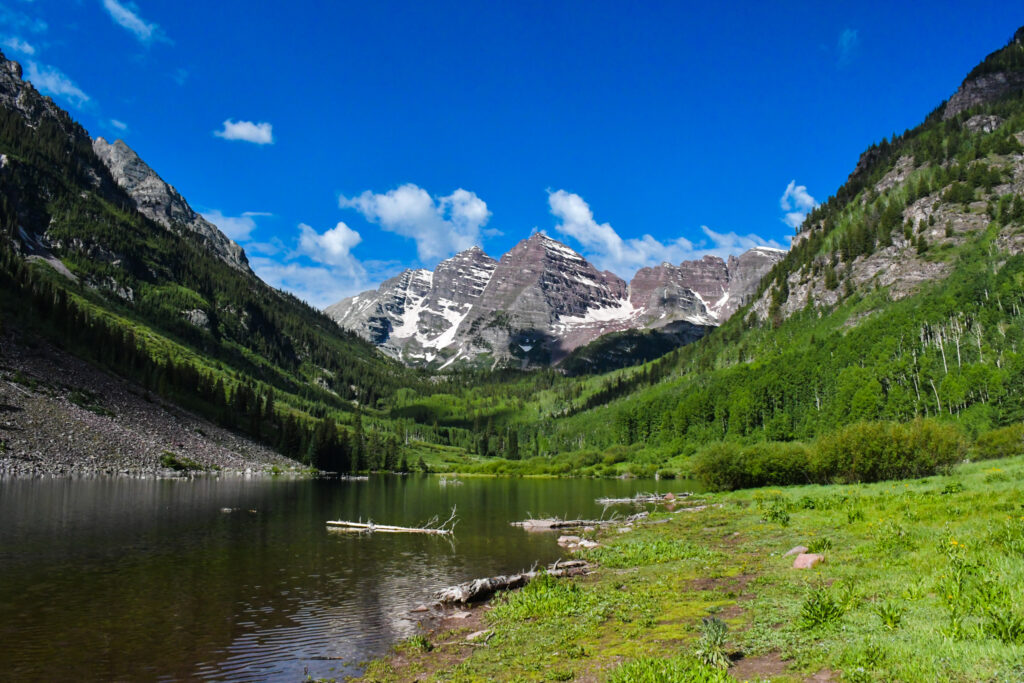
When is summer in Colorado?
Summer in Colorado typically spans from June to August. During this time, the weather is generally warm, especially in the lower elevations.
Daytime temperatures range from the 70s to the 90s Fahrenheit (20s to 30s Celsius), depending on the specific location and elevation. It’s a popular season for outdoor activities such as hiking, camping, fishing, mountain biking, and exploring national parks. However, Colorado’s weather can change very quickly, so it’s always a good idea to check the forecast before planning any outdoor activities.
When does spring start in Colorado?
Spring in Colorado typically begins in March and extends through May. Early March still sees plenty of cool wintery days with occasional snowfall, but temperatures begin to rise in early April. As the season progresses into April and May, temperatures rise, and snow starts to melt at lower elevations. Colorado’s weather during the transition from winter to spring can be unpredictable, with rapid changes and the potential for snowstorms.
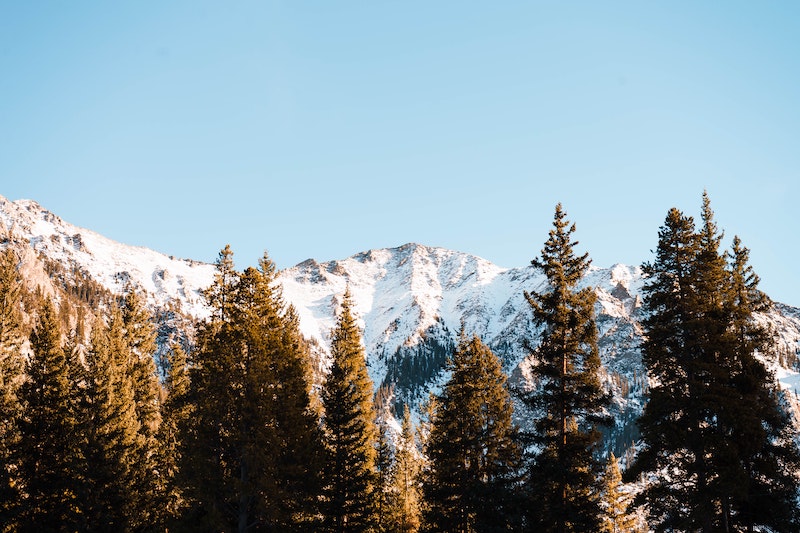
When is winter in Colorado?
Winter in Colorado begins in December and extends through February. During this time, the state experiences colder temperatures, snowfall, which means there are plenty of opportunities for winter sports.
In December, winter sets in with temperatures dropping and the first significant snowfalls occurring. Ski resorts and mountainous regions like Aspen, Vail and Telluride become popular destinations for skiing, snowboarding, snowshoeing, and other winter activities.
January and February are typically the coldest months in Colorado. Snowfall is more frequent, and temperatures can dip below freezing. The mountains receive abundant snow, making it an ideal time for winter sports enthusiasts to enjoy the state’s renowned ski resorts.
Winter in Colorado: high elevations vs lower elevations
It’s important to note that Colorado’s weather can vary depending on location and elevation. Higher elevations and mountainous areas will generally experience colder temperatures and heavier snowfall compared to lower elevations. It’s advisable to check local weather forecasts and road conditions, particularly when planning travel or outdoor activities during the winter months.
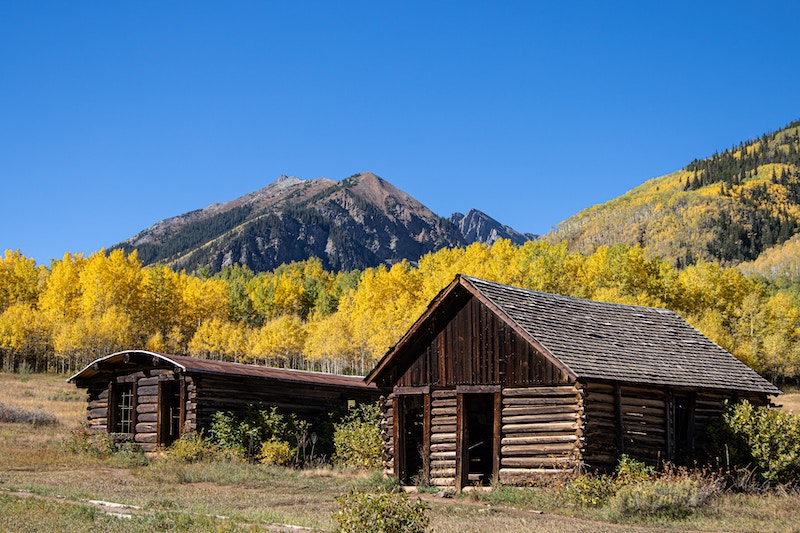
When is fall in Colorado?
Fall in Colorado begins in September and extends through November. Temperatures cool down, and the leaves on deciduous trees start changing color, creating stunning autumn foliage that Colorado is so famous for, with places like Aspen, Telluride, and Crested Butte putting on stunning fall displays.
In September, the weather can still be warm, especially during the early part of the month. As October arrives, temperatures begin to drop, and you can expect cooler and more comfortable weather. October is often regarded as the prime month for fall foliage viewing in Colorado, with vibrant hues of red, orange, and yellow painting the landscapes.
By November, temperatures continue to decrease, and there can be occasional snowfall, especially in higher elevations. It’s a transitional period between fall and winter, and the colors of autumn gradually give way to the colder months.
How to see the fall colors in Colorado?
It’s important to note that the timing and intensity of fall foliage can vary depending on the specific location within Colorado and the elevation. Higher elevations and mountainous regions may experience an earlier onset of fall colors compared to lower elevations. Checking local forecasts and foliage trackers can help in planning the best time to witness the peak fall foliage in different areas of Colorado.
How long are springs in Colorado?
Spring in Colorado generally lasts for approximately three months, from March to May. The exact duration of spring can vary from year to year and also depends on the specific location within the state. While March still sees plenty of snow, by May, warmer temperatures usually settle in and as spring transitions into the warmer months of summer, the landscapes become lush and green.
What is summer like in Colorado?
Summer in Colorado is generally warm, with plenty of sunshine and plenty of outdoor activities to enjoy. Summers in Colorado are the best time for hiking, mountain biking, and camping, with many visitors coming here from all over the country.
I’ve spent several summers in Colorado, and can tell you that it’s my favorite season!
Here’s what you can expect during summer in Colorado:
- Temperatures: In lower elevations and cities like Denver, summer temperatures typically range from the 70s to 90s Fahrenheit (20s to 30s Celsius), with occasional heat waves reaching higher temperatures. However, at higher elevations, such as in the mountains, temperatures are generally cooler, making it a great escape from the heat.
- Sunshine: Colorado is known for its abundant sunshine, even during the summer months. You can expect long daylight hours and sunny days, which provide ample opportunity to explore the outdoors.
- Outdoor Activities: Summer is one of the most popular Colorado seasons for recreational activities. Hiking, mountain biking, camping, fishing, river rafting, and rock climbing are just a few examples of the activities available. Colorado’s numerous national parks and state parks offer breathtaking scenery and fun hiking and biking trails.
- Thunderstorms: Summer afternoons in Colorado often bring the chance of thunderstorms, especially in the mountains. These storms can be intense but typically pass quickly. It’s advisable to be prepared and seek shelter during thunderstorms.
- Festivals and Events: Summer is a vibrant season for festivals and events in Colorado. From music festivals to food and art events, numerous cultural celebrations take place during this time.
Colorado seasons: final word
No matter what Colorado season you choose, you will always have a great time! Summers in Colorado are generally warm and pleasant, especially in the lower elevations, while fall brings cooler temperatures and stunning foliage colors as the leaves change. Winters are perfect for enjoying activities like snowboarding and skiing and spting is a downtime when you can save money on hotels and activities, before summer kicks in.
